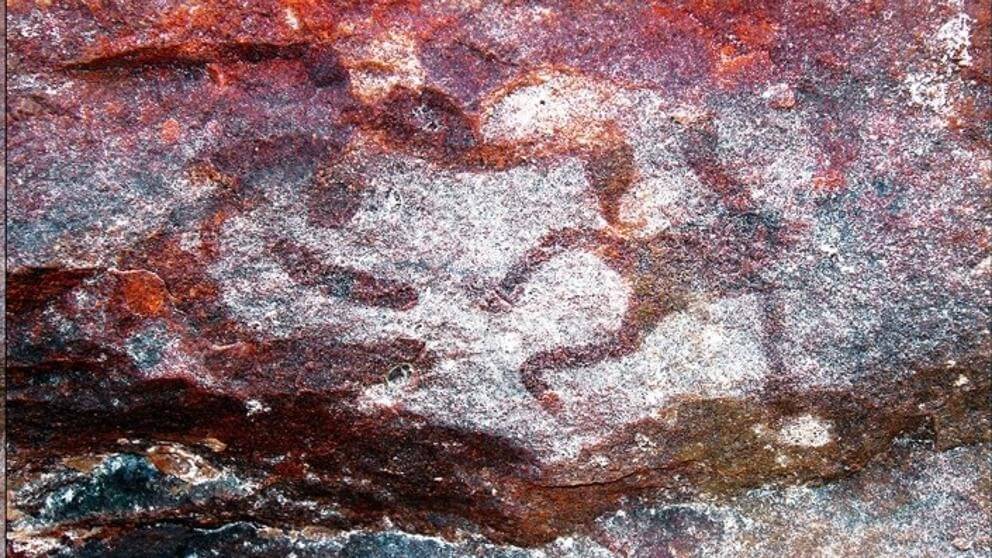Archaeologists May Have Uncovered the Secret Ingredient Behind Australia's Mysteriously Precise Cave
Archaeologists May Have Uncovered the Secret Ingredient Behind Australia’s Mysteriously Precise Cave Paintings: Beeswax
Archaeologists have a new theory about how ancient artists made the rare miniature stenciled rock art.
Sarah Cascone, June 2, 2020

Was this ancient rock art created using beeswax stencils? Photo courtesy of Liam M. Brady, John J. Bradley, Amanda Kearney, and Daryl Wesley.
Archaeologists in Australia believe they have identified a previously undocumented beeswax stenciling technique used by ancient artists to create cave paintings.
Most rock art stencils are large in scale. Artists would place their hand or other objects on the wall and spray liquid pigment, creating a full-size negative image. But the artworks at a Limmen National Park site called Yilbilinji, in the Gulf of Carpentaria region of northern Australia, are much smaller. There are 17 tiny stenciled paintings at the site, some depicting human figures and animals, such as kangaroos and turtles, others of boomerangs and geometric designs.
Studying the 500-year-old rock art there, a team from Australia’s Flinders University and Monash University, have come up with a new theory about how Aboriginal artists created the miniature and small-scale stenciled motifs.
The team was able to replicate the mysterious miniature art using tiny models sculpted from beeswax, publishing their findings last month in the journal Antiquity. Representatives of the local Indigenous Marra people assisted with the experiment, which only used materials that are native to the region.
More:
https://news.artnet.com/art-world/ancient-rock-art-beeswax-1877343
